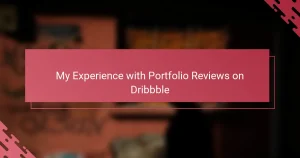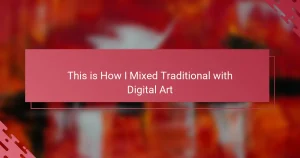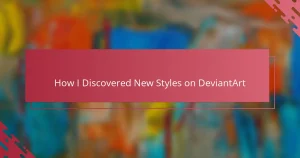Key takeaways
- An illustrator portfolio showcases an artist’s unique style, skills, and emotional narratives, serving as a visual resume.
- Instagram offers a dynamic platform for illustrators, facilitating engagement, feedback, and organic growth of their portfolio.
- Consistency in visual style and coherence in artwork selection enhance audience connection and foster community interaction.
- Measuring success on Instagram involves analyzing audience engagement, emotional connections, and tracking growth, rather than just likes and followers.
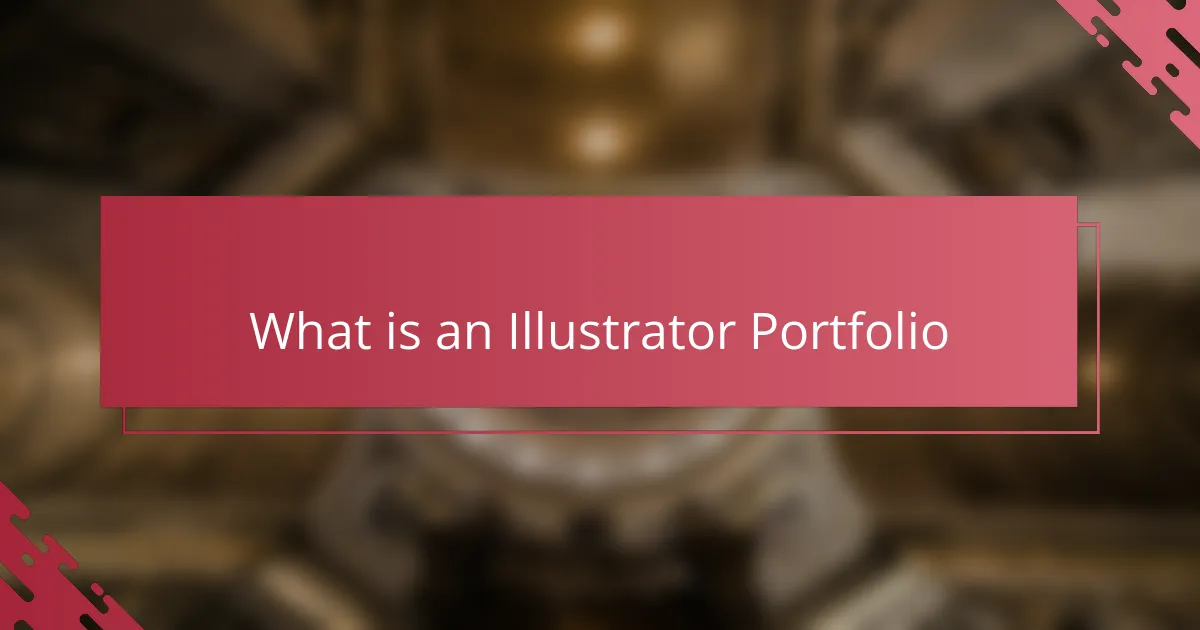
What Is An Illustrator Portfolio
An illustrator portfolio is more than just a collection of images—it’s a window into your creative world. From my experience, it’s where your style, skill, and unique voice come alive in a way that words alone never could. Have you ever wondered how to truly capture your artistic journey in a single place?
For me, building a portfolio felt like curating a personal gallery. Each piece had to reflect not just my technical ability but also the emotions and stories behind it. It’s a space that shows potential clients or employers who you are as an artist, beyond the surface.
Ultimately, an illustrator portfolio is your visual resume. It’s what sets you apart in a competitive field and invites others to connect with your work on a deeper level. How can you share your creative essence if not through a thoughtfully crafted collection of your best illustrations?
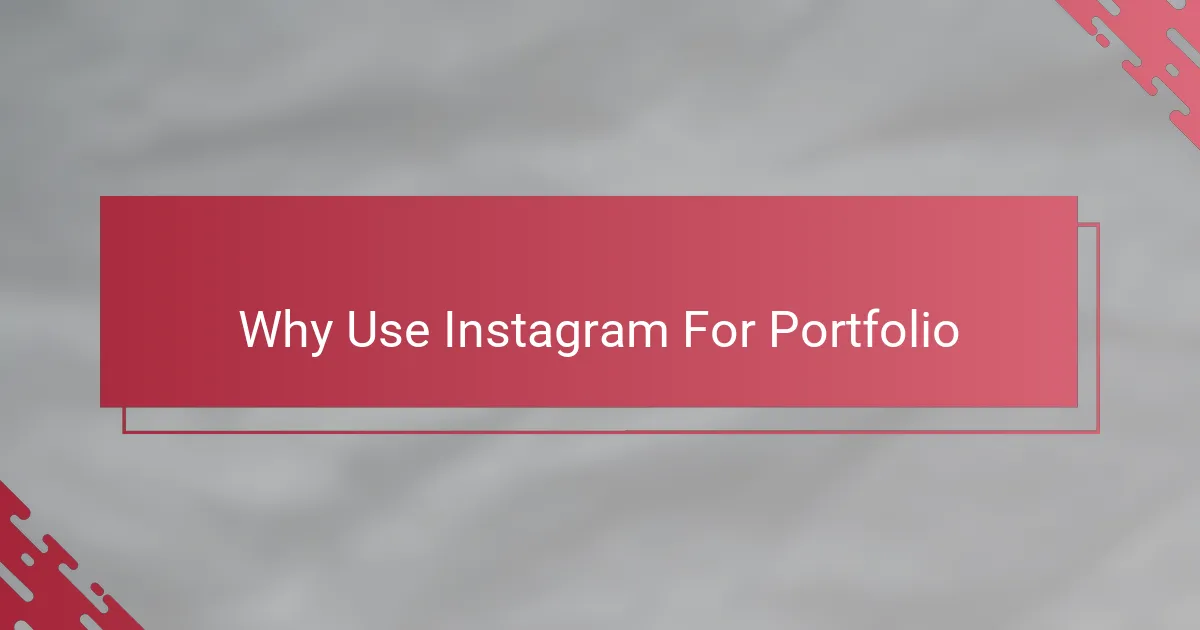
Why Use Instagram For Portfolio
Instagram quickly became my go-to platform for showcasing my illustrations because it blends simplicity with immense reach. I remember feeling amazed at how a single post could connect me to art lovers and potential clients across the globe, something a traditional portfolio alone never achieved. The visual nature of Instagram suits illustrators perfectly—it lets my work speak for itself without distractions.
What really stands out to me is how Instagram encourages ongoing engagement. Unlike a static portfolio website, it allows me to tell stories behind each piece, share progress shots, and even get immediate feedback. Have you ever experienced that thrill when someone comments on your art or sends a direct message expressing genuine interest? That interaction brings your portfolio to life and keeps you motivated.
Another benefit I’ve found is the ease of updating my portfolio on Instagram. There’s no waiting for website redesigns or complicated uploads—just snap, post, and share. This flexibility means my portfolio grows organically as I evolve as an artist, making the platform feel like an authentic reflection of my current creative journey.
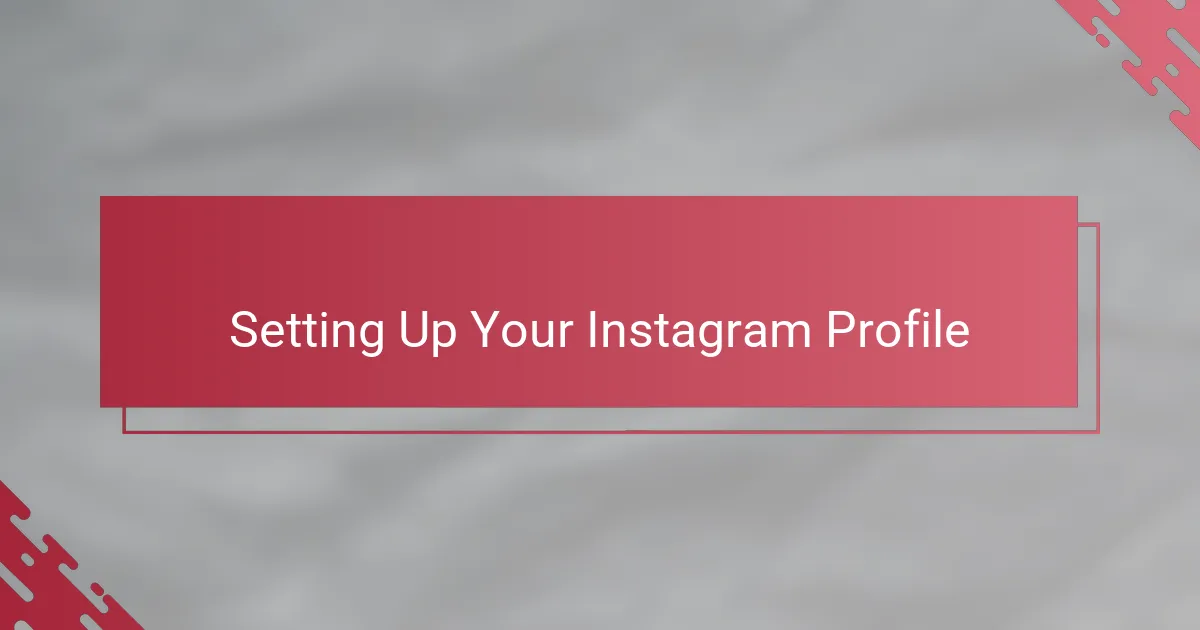
Setting Up Your Instagram Profile
The very first step I took was choosing a clear, memorable username that instantly felt like “me.” I realized early on that your Instagram handle is like your brand’s handshake—friendly, confident, and unmistakable. Have you ever struggled to find a name that’s both professional and catchy? It took me a few tries, but settling on one that reflected my style made a world of difference.
Crafting the bio was another moment where I got to show personality. I treated it like a mini elevator pitch—short, punchy, but still inviting. Instead of just listing “illustrator,” I added a little about what fuels my creativity and the kinds of projects I’m passionate about. That bit of honesty seemed to resonate with visitors and sparked conversations I hadn’t expected.
Then there’s the profile photo—simple but powerful. I chose a clean, recognizable image that didn’t compete with my artwork but complemented it. It felt like putting a face to the portfolio, making my page feel more approachable. Looking back, I understand how these small details build trust and make people want to learn more about my work.
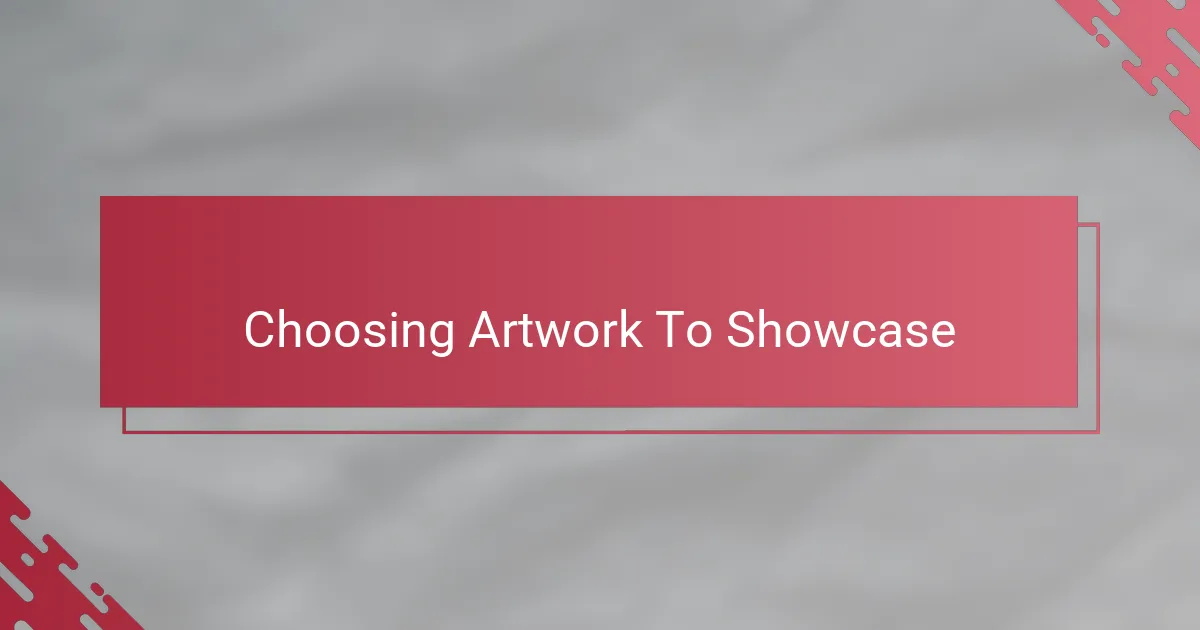
Choosing Artwork To Showcase
Choosing which artwork to showcase felt like a deeply personal decision. I asked myself: does this piece truly represent my style and skill? Sometimes, even if I loved a drawing, I held back if it didn’t tell the right story or fit the vibe I wanted my portfolio to convey.
I’ve learned that variety matters, but coherence is key. Including different subjects or techniques can highlight versatility, but I made sure my posts still felt like parts of a whole. It’s a bit like creating a playlist—you want each song to shine individually but also flow together.
There were moments when selecting art felt overwhelming, especially when I had too many favorites. What helped me was imagining which pieces would catch a stranger’s eye scrolling through Instagram. That perspective shifted my choices, pushing me to pick work that felt confident and inviting from the first glance.
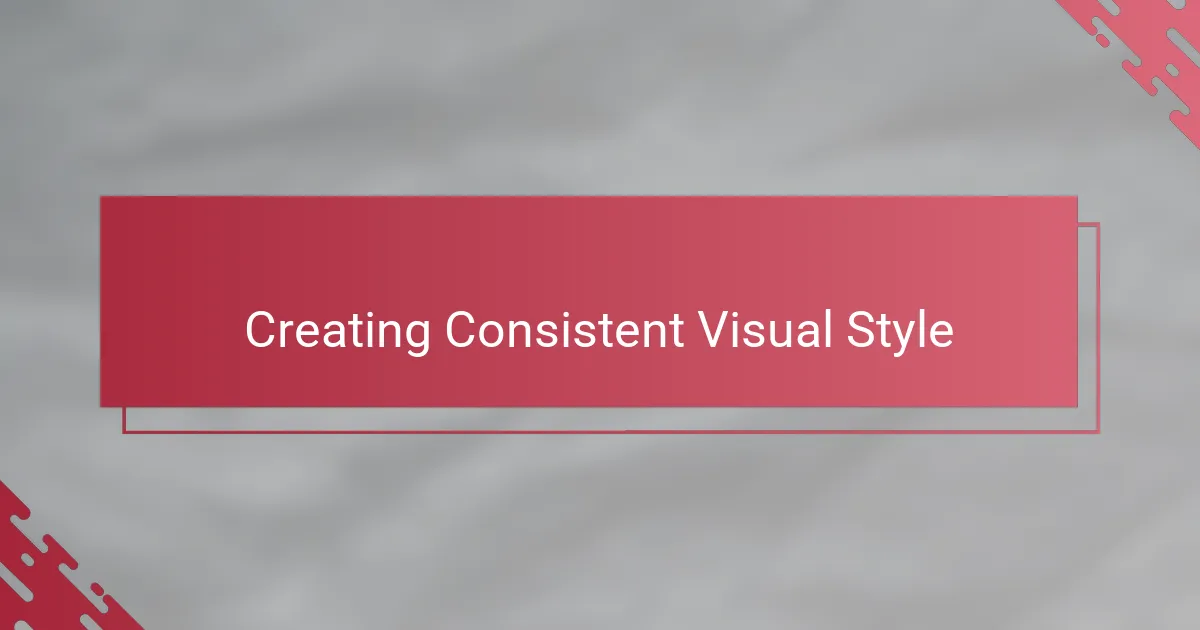
Creating Consistent Visual Style
For me, creating a consistent visual style on Instagram was a game-changer. I realized early that sticking to a cohesive color palette and similar themes made my feed feel like a unified story rather than a random collection. Have you ever scrolled through profiles that look all over the place and felt less inclined to follow? That’s exactly what I wanted to avoid.
I also found that consistency wasn’t just about colors or subjects—it was about mood and energy. When I kept my illustrations light and playful, with clean lines and soft textures, it created a recognizable vibe that followers could instantly connect with. It felt like building a visual signature, one post at a time.
Sometimes, staying consistent meant making tough calls. I remember hesitating to post a piece that was brilliant technically but didn’t fit my established style. In the end, choosing harmony over variety helped me grow a more engaged audience who knew exactly what to expect—and that felt incredibly rewarding.
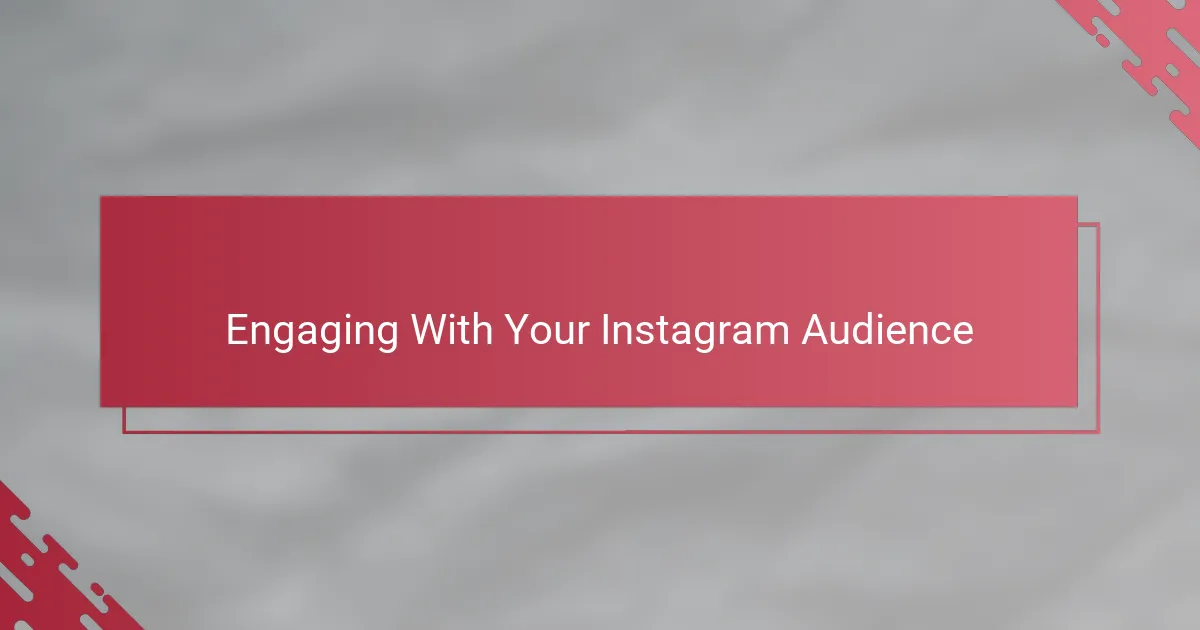
Engaging With Your Instagram Audience
Engaging with your Instagram audience isn’t just about posting and hoping for likes—it’s about creating a genuine connection. Early on, I noticed that responding to comments and DMs transformed casual viewers into a community that supported and inspired me. Have you ever felt that buzz when someone takes the time to ask about your creative process? Those moments made me realize my work resonated on a personal level.
I also found that asking questions in my captions sparked more interaction than just sharing the finished piece alone. It’s like inviting someone into your studio, encouraging them to share their thoughts or even their own experiences. This two-way conversation turned my feed from a gallery into a lively space where ideas flowed freely.
Sometimes, engagement meant stepping outside my comfort zone—like hosting live Q&A sessions or sharing behind-the-scenes clips. At first, it felt a bit awkward, but the payoff was worth it. Seeing followers genuinely curious and invested in my journey gave me fresh motivation and a stronger sense of belonging in the illustrator community.
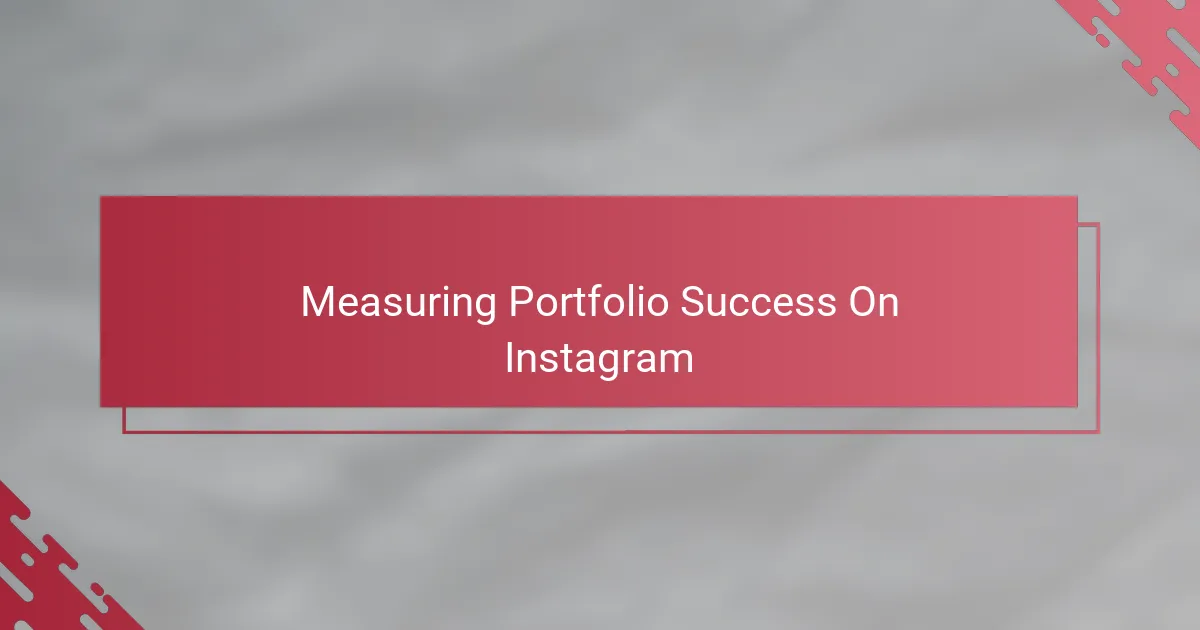
Measuring Portfolio Success On Instagram
Measuring portfolio success on Instagram goes beyond counting likes and followers. From my experience, true success lies in how your audience responds to your work—are they leaving thoughtful comments, saving your posts, or sharing them with their own networks? I once saw a piece with modest likes but countless saves and messages asking about commissions, which told me it was really resonating.
I ask myself regularly: is my portfolio attracting the right kind of attention? Engagement metrics like comments and shares give clues, but I’ve learned to look deeper. For example, receiving DMs from people who connect emotionally with my illustrations means I’m building relationships, not just numbers.
Tracking growth over time also matters. I kept an informal log of weekly follower increases and interaction spikes. When I noticed a particular style or post format got more traction, it helped me refine my approach. That way, success feels less like luck and more like a conversation between me and my audience.
